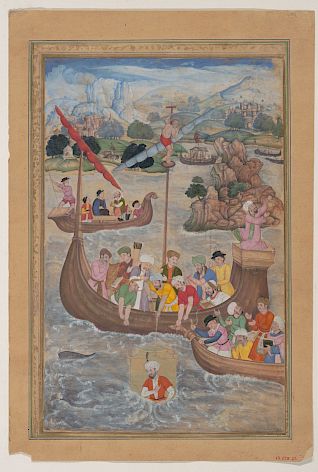What We're Reading This Week

Mahdi Chowdhury, Harvard University
Isabel Hofmeyr, “Hydrocolonialism: How books travelled from colonial ports to personal shelves,” The Wire
Hofmeyr introduces her forthcoming book Dockside Reading, the figure of the regulatory Custom House, and how “British copyright became a token that a book […] was implicitly “white” and safe to admit”—and, moreover, how “[c]olonial copyright was hence construed as a racial trademark and logistical inscription.”
Mahmood Kooria, “Translative sedimentations in the Indian Ocean,” The Immanent Frame
The practice of Islamic “commentarial translation” across the late 19th-century Indian Ocean world offers us a rich, hybrid manuscript archive spanning many shores.
Ali Olomi, “The U.S. replicated crucial flaws from the past in Afghanistan,” The Washington Post
From British imperialism to the Cold War to the American “War on Terror,” successive occupations of Afghanistan have “entrenched a system of corruption” —which the Taliban have, in turn, exploited and leveraged to their own political ends.
Nicholas Sy, University of the Philippines Diliman
Philip Kurian, “Combating empire’s blinkered history: The landmark repatriation of tweed MS150,” Los Angeles Review of Books
Kurian describes the variables at play in the repatriation from Howard University to Ethopia of a 17th-century illuminated manuscript including “a rare and valuable historical African royal historical record on encounters with the West.”
Cath Pound, “How the Dutch are facing up to their colonial past,” BBC
Slavery permeated Dutch society both in the colonies and at home. Cath Pound introduces the Rijksmuseum’s June to August 2021 exhibit on this social history.
Marco Ramerini, “Le tre comete del 1618: Una testimonianza dalle isole delle spezie, le Molucche,” Colonial Voyage
In 1618 three comets flew across the sky, visible from Augsburg, Isfahan, Korea, China, and the Philippines. Ramerini describes their sighting in the Moluccas Islands.
Hayley Keon, University of Hong Kong
Meg Keneally, “‘No concept of how awful it was’: The forgotten world of pre-vaccine childhood in Australia,” The Guardian
With the resumption of classes in a COVID world bringing the discourses surrounding vaccination even further to the fore of public consciousness, Meg Keneally’s timely article for The Guardian reflects upon the precarity that diseases imposed upon childhood in the not-too-distant past. Taking her father’s early years as a starting point, she examines the impact of sickness on the young in Australia in a period when inoculation against once-common childhood ailments remained nascent. In the process, she warns that complacency surrounding vaccines has only emerged as a result of effective vaccination and that ignoring these historical legacies could have dire consequences for young people today.
Priya Satia, “To understand Afghanistan’s future, reckon with the region’s colonial past,” Foreign Policy
While the evocative imagery connecting Kabul and the fall of Saigon has made headlines, Prof. Priya Satia argues for another comparison through which to read Afghanistan’s recent takeover by the Taliban. Recalling histories of colonial violence, she traces a narrative of the British partition of India in 1947 that emphasizes the implication of Western powers in not only fostering but also shaping the forces of civil unrest. While illustrating the extent to which Afghanistan remained embroiled in the after-effects of partition (lying as it did beside the outer edge of the new Pakistan), she also nods towards the impact that division continues to wreak upon South Asia in the present.
Jarvis R. Givens, “Fugitive pedagogy: The longer roots of antiracist teaching,” Los Angeles Review of Books
In his article for the Los Angeles Review of Books, Prof. Jarvis R. Givens provides historical context to recent debates surrounding antiracist teaching at schools and universities. Linking current pedagogies to their origins in the 19th-century, he highlights the work of Black educators in developing teaching strategies that aimed to combat the omnipresence of white supremacist discourses in US education. At the same time, he examines the deeper roots of the standing resistance to teaching about race in American institutions, exposing the continuities between the past and the present in ways that help to locate current trends in historical context.